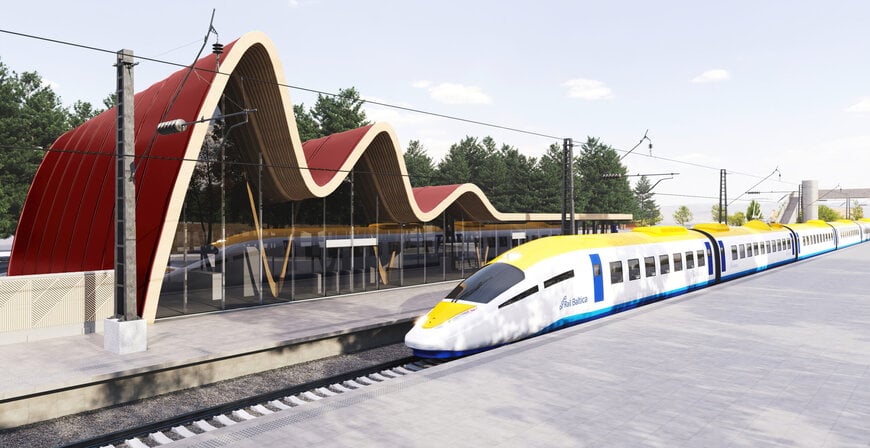€394 M. contract* awarded to NGE and partners on Rail Baltica, Europe's Top 3 Mobility Project
NGE brings Expertise from mega rail infrastructure projects Grand Paris Express and Lyon-Turin to Rail Baltica, further reinforcing the Group reputation for delivering a wide spectrum of infrastructure projects for large, high-profile international ventures.

Rail Baltic Estonia OÜ has awarded NGE, top 4 French construction and civil engineering Group, and partners GRK Eesti AS, GRK Finland Ltd, AS Merko Ehitus Eesti, Sweco Finland Oy and Sweco Sverige AB a contract to design and build
the Rail Baltica main railway in Estonia, valued at 394M€ / 540 M€ including options (NGE’s share 40%).
"Winning the Rail Baltica contract is a key milestone in our European expansion, showcasing our ability to deliver both local and large-scale infrastructure projects. We’re proud to contribute to enhancing connectivity across the Baltics and Europe. The Alliance model is an innovative way of working we successfully experimented in the UK, and that allows us to work closely with the client and partners, ensuring efficiency, cost control, and timely delivery. This project aligns with our goal to be a leading player in European railinfrastructure."
Jean Bernadet, President of the NGE Group.
Rail Baltica is a critical 870 km-long European railway corridor project spanning Estonia, Latvia, and Lithuania, connecting the Baltics to the Trans-European Transport Network TEN-T (UIC 1435mm track gauge specification). Traffic is expected to be between 4.7 million and 7.1 million passengers in 2055. The overall investment is about a 15bn€. A total of 213 kilometers of completely new main track will be built in Estonia, which is expected to be completed by 2030.
The award of this significant contract, alongside earlier contracts secured in Sweden and in the UK, marks a key milestone in NGE’s ongoing expansion across Europe.
NGE and its partners will deliver the 150km-long Alliance 1 (northern main track section between the Tallin Ülemiste station and the Pärnu freight terminal). The scope of this design and build contract includes the overall superstructure of the track, on the Tootsi-Pärnu south section, the project also includes the substructure of the railway incorporating the construction of noise barriers, railway bridges, green bridges, underpasses, and access and maintenance roads near the railway.
Innovative “Alliance” contract model
This project is based on an innovative "Alliance" contract model, a collaborative approach that is uncommon in France but widely used in Anglo-Saxon countries and Finland. Unlike traditional contracts, this model integrates the client directly into the consortium, making them an active participant in decision-making.
By fostering close cooperation between all stakeholders, the Alliance model enhances cost control and project scheduling, ensuring greater efficiency and transparency. This structured collaboration is particularly crucial for a project of this scale, where meeting deadlines and managing complexities are key challenges.
NGE/TSO expertise
The consortium will leverage the expertise of TSO, the railway subsidiary of the NGE Group, renowned for its extensive experience in delivering high-speed rail projects. With 2,800 km of high-speed lines built worldwide, TSO has played a key role in shaping modern rail infrastructure.
Within the consortium, TSO will provide its specialized expertise, skilled workforce, and a full range of heavy track works equipment specifically adapted to the UIC 1435mm standard gauge of the European TEN-T system.
NGE’s award of this contract further reinforces its position as a major player in infrastructure development within one of its historical markets. TSO’s ability to implement tailored planning strategies aligned with client objectives, combined with its comprehensive expertise in high-speed rail project management, were decisive factors in securing this project.
The Group's excellence in high-speed rail construction is evidenced by world speed records achieved on ballasted tracks laid by TSO: 513.3 km/h on the French Atlantic high-speed line in 1990 and 574.8 km/h on the East European high-speed line in 2007.
Further communications will be released once the standstill period is over according to public procurement regulations.
www.nge.fr

